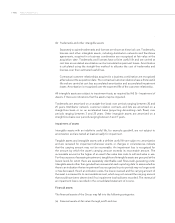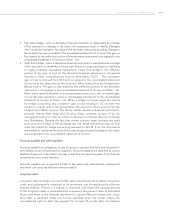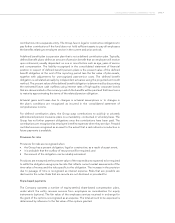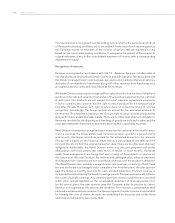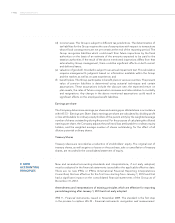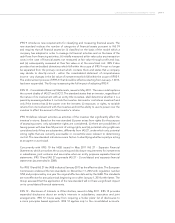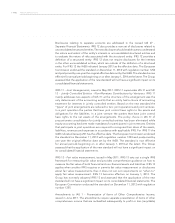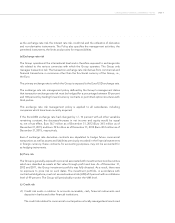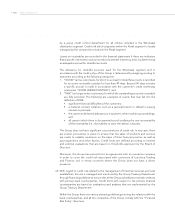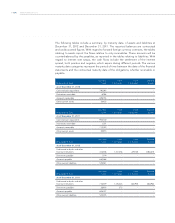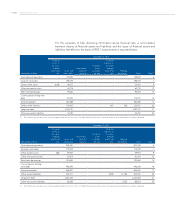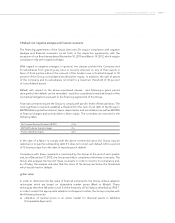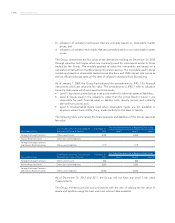LensCrafters 2012 Annual Report Download - page 204
Download and view the complete annual report
Please find page 204 of the 2012 LensCrafters annual report below. You can navigate through the pages in the report by either clicking on the pages listed below, or by using the keyword search tool below to find specific information within the annual report.
ANNUAL REPORT 2012> 118 |
Disclosures relating to separate accounts are addressed in the revised IAS 27 -
Separate Financial Statements. IFRS 12 also provides a new set of disclosures related to
unconsolidated structured entities. The new disclosures should enable users to understand
the nature and extent of the entity’s interests in unconsolidated structured entities and
to evaluate the nature of risks associated with the structured entity. IFRS 12 provides a
definition of a structured entity. IFRS 12 does not require disclosures for the interests
in the other unconsolidated entities, which are outside of the definition of a structured
entity. For IFRS 12 the IASB indicated January 2013 as the effective date. The European
Commission endorsed the standard on December 11, 2012 with regulation number 1254
and postponed by one year the original effective date set by the IASB. The standard is now
effective for annual periods beginning on or after January 1, 2014 at the latest. The Group
assessed that the application of the new standard will not have a significant impact on its
consolidated financial statements.
IFRS 11 - Joint Arrangements, issued in May 2011. IFRS 11 supersedes IAS 31 and SIC
13 - Jointly Controlled Entities - Non-Monetary Contributions by Venturers. IFRS 11
mainly addresses two aspects of IAS 31: a) the structure of the arrangement was the
only determinant of the accounting and b) that an entity had a choice of accounting
treatment for interests in jointly controlled entities. Based on the new standard the
“types” of joint arrangements are reduced to two: joint operations and joint ventures.
In a joint operation the parties that have joint control have rights to the assets and
obligations for the liabilities. In a joint venture the parties that have joint control
have rights to the net assets of the arrangements. The policy choice in IAS 31 of
proportionate consolidation for jointly controlled entities has been eliminated while
equity accounting has been made mandatory for participants in joint ventures. Entities
that participate in joint operations are required to recognize their share of the assets,
liabilities, revenues and expenses in accordance with applicable IFRS. For IFRS 11 the
IASB indicated January 2013 as the effective date. The European Commission endorsed
the standard on December 11, 2012 with regulation number 1254 and postponed by
one year the original effective date set by the IASB. The standard is now effective
for annual periods beginning on or after January 1, 2014 at the latest. The Group
assessed that the application of the new standard will not have a significant impact on
its consolidated financial statements.
IFRS 13 - Fair value measurement, issued in May 2011. IFRS 13 sets out a single IFRS
framework for measuring fair value and provides comprehensive guidance on how to
measure the fair value of both financial and non-financial assets and liabilities. IFRS 13
applies when another IFRS requires or permits fair value measurement or disclosures
about fair value measurements, thus it does not set out requirements on “when to”
apply fair value measurement. IFRS 13 becomes effective on January 1, 2013. The
Group has not early adopted IFRS 13 and assessed that the application of the new
standard will not have a significant impact on its consolidated financial statements. The
European Commission endorsed the standard on December 11, 2012 with regulation
number 1255.
Amendments to IAS 1 - Presentation of Items of Other Comprehensive Income,
issued in June 2011. The amendments require separate presentation of items of other
comprehensive income that are reclassified subsequently to profit or loss (recyclable)


